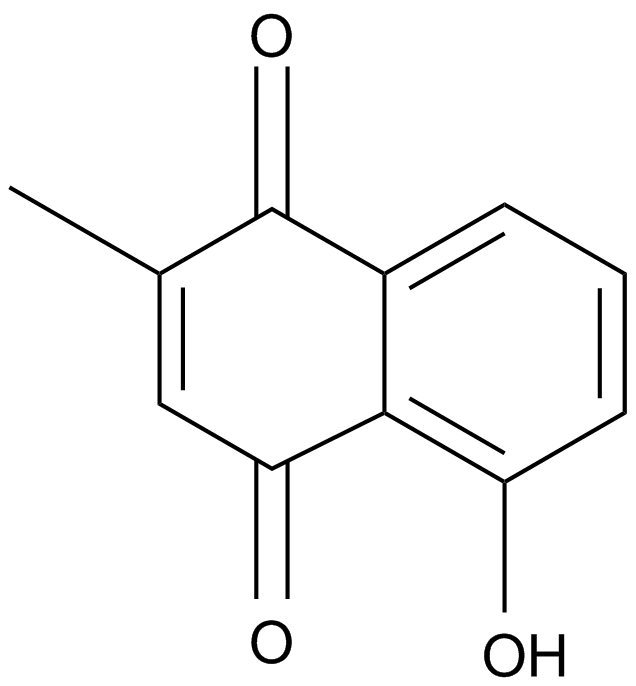Plumbagin (Synonyms: NSC 236613, NSC 688284) |
| Catalog No.GC10315 |
A natural naphthoquinone
Products are for research use only. Not for human use. We do not sell to patients.

Cas No.: 481-42-5
Sample solution is provided at 25 µL, 10mM.
IC50: 11.69 μM for A549 cells
Plumbagin, a quinonoid constituent isolated from the root of Plumbago zeylanica L., has been shown to exert anticarcinogenic, antiatherosclerotic, and antimicrobial effects.
In vitro: Plumbagin exhibited effective cell growth inhibition via inducing cancer cells to undergo G2/M phase arrest and apoptosis. Blockade of cell cycle was associated with increased levels of p21 and reduced amounts of Cdc2, Cdc25C and cyclinB1. Plumbagin treatment also found to enhance the levels of inactivated phosphorylated Cdc2 and Cdc25C. Blockade of p53 activity partially decreased plumbagin-induced apoptosis and G2/M arrest, indicating it might be operated by p53-dependent and independent pathway [1].
In vivo: To determine whether plumbagin inhibited the in vivo tumor growth, A549 cells were injected into nude mice. Tumor growth inhibition was most evident in mice treated with plumbagin at 2 mg/kg/day, where around 80% reductions in tumor size were observed, in contrast with mice treated with the vehicle. No sign of toxicity was observed in plumbagin-treated mice as judged by monitoring body weight [1].
Clinical trial: N/A
Reference:
[1] Hsu YL,Cho CY,Kuo PL,Huang YT,Lin CC. Plumbagin (5-hydroxy-2-methyl-1,4-naphthoquinone) induces apoptosis and cell cycle arrest in A549 cells through p53 accumulation via c-Jun NH2-terminal kinase-mediated phosphorylation at serine 15 in vitro and in vivo. J Pharmacol Exp Ther.2006 Aug;318(2):484-94.
Average Rating: 5 (Based on Reviews and 30 reference(s) in Google Scholar.)
GLPBIO products are for RESEARCH USE ONLY. Please make sure your review or question is research based.
Required fields are marked with *




















